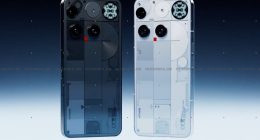At its annual F8 developer conference, Facebook has today announced the release of a new developer kit which simplifies the capture and sharing of VR experiences. The social media giant is continually looking at ways to demystify VR and make it available for viewing to those who aren’t able to experience it themselves — in the form of 360 photos and videos.
Called 360 Capture SDK (software development kit), this suite of tools enables developers to incorporate features to record and share the perspective of the user/gamer enjoying his gala time in the virtual world. Once the said feature is added, you can simply record the current scene for sharing on your News Feed or through the VR headgear itself — which becomes available for viewing at a later stage.
These developer tools enable users to share their experiences socially, courtesy of Facebook’s new cube mapping technology in favor of the traditional stitching method for creating 360-degree spherical and panoramic images/videos. Currently, most VR experiences are created simply by capturing every frame of a particular scene — one at a time and then stitching them together to form one whole image. You can continue to repeat this process and encode a bunch of images to form a new 360-degree video experience. However, as it sounds, this process is not only resource and time intensive but also provides you with a low-quality output.
Thus, Facebook has now decided to employ a new technique called cube mapping, which enables you to capture your environment through the six faces of a cube. The social media giant wants to provide you with a viewing experience as realistic and high-quality as possible — with six degrees of freedom and 4K streaming.
As for how the technology works, a bunch of overlapping photos covering all 360 degrees of the view are captured. Facebook is then employing a computer vision process to stitch the scenes together to form one panoramic file by detecting the overlap of features in various images. The final step involves encoding and saving the final photo at a high resolution. Talking about the same in an official blog post, Chetan Gupta, a product manager at Facebook’s 360 Media division said:
By using cube mapping, we successfully made VR experiences accessible and viewable in high quality—with the additional benefit that content can be captured quickly.
Now, Facebook noticed the following key differences when shifting over to cube mapping from stitching:
[mks_accordion] [mks_accordion_item title=”Accessibility“] Through 360 Capture SDK, which uses cube mapping, Facebook has been able to cut down on computing power required to capture 360 content. You no longer require supercomputers or heavy gaming rigs to compute the output at the minimum requirement, 90 frames per second (fps) for VR.[/mks_accordion_item] [mks_accordion_item title=”Quality“] The cube mapping technique enables developers to maintain a high-quality experience, either in 1080p or 4K, for people viewing captured 360 content in VR or on News Feed.
[/mks_accordion_item] [mks_accordion_item title=”Speed“] This also enables Facebook to maintain 90 fps performance on virtual reality systems like Rift, while capturing VR-quality 360 video at 30 fps in a single second.
[/mks_accordion_item] [/mks_accordion]
Now, the developers interested in applying the powers of the 360 Capture SDK into their VR applications are required to use either the Unity or Unreal game engine. Facebook has currently released a sample SDK on GitHub to enable developers to test out a social experience in the VR games and apps they’re developing. The company’s first social VR platform, Spaces comes packed this experience out of the box.





